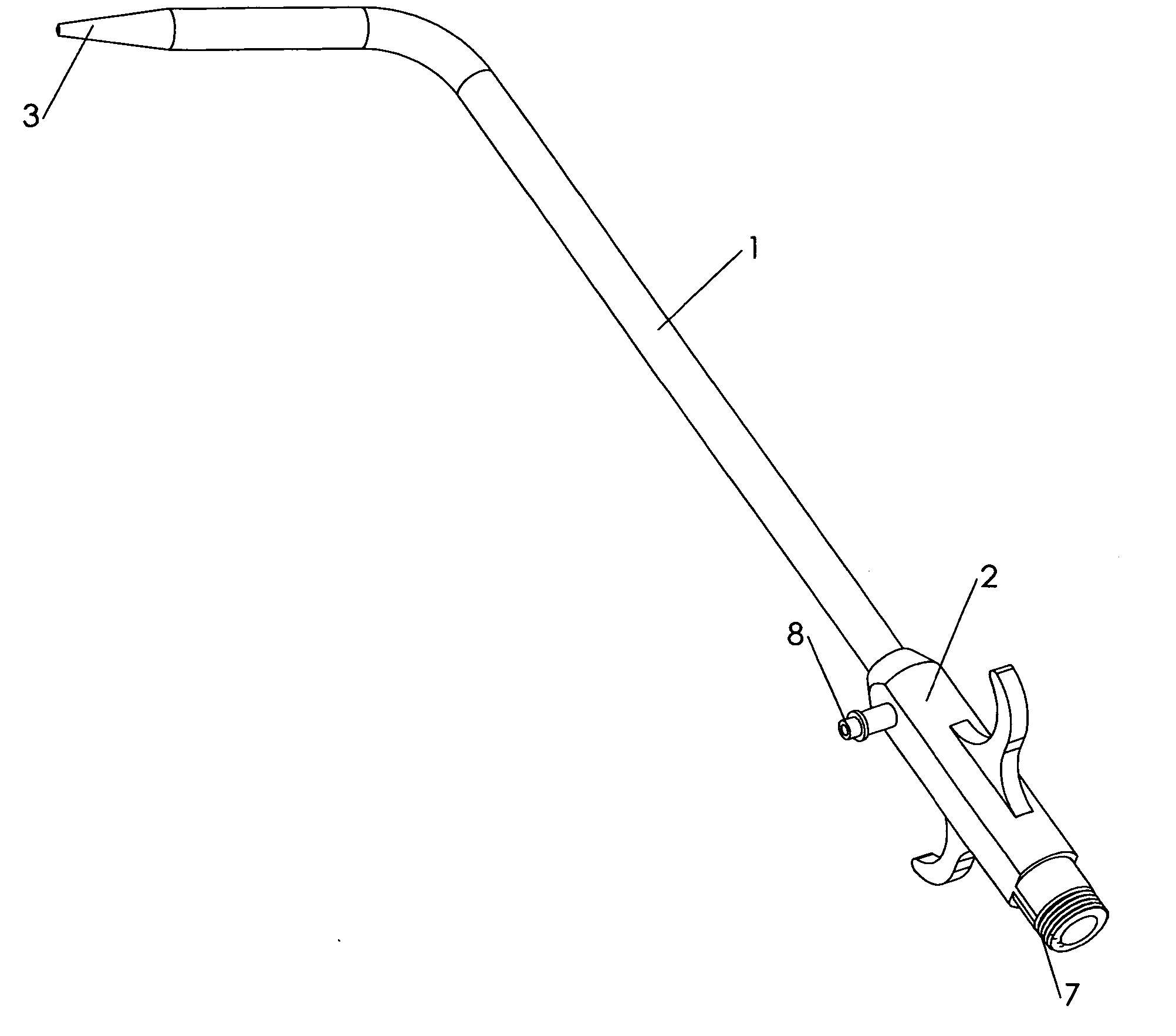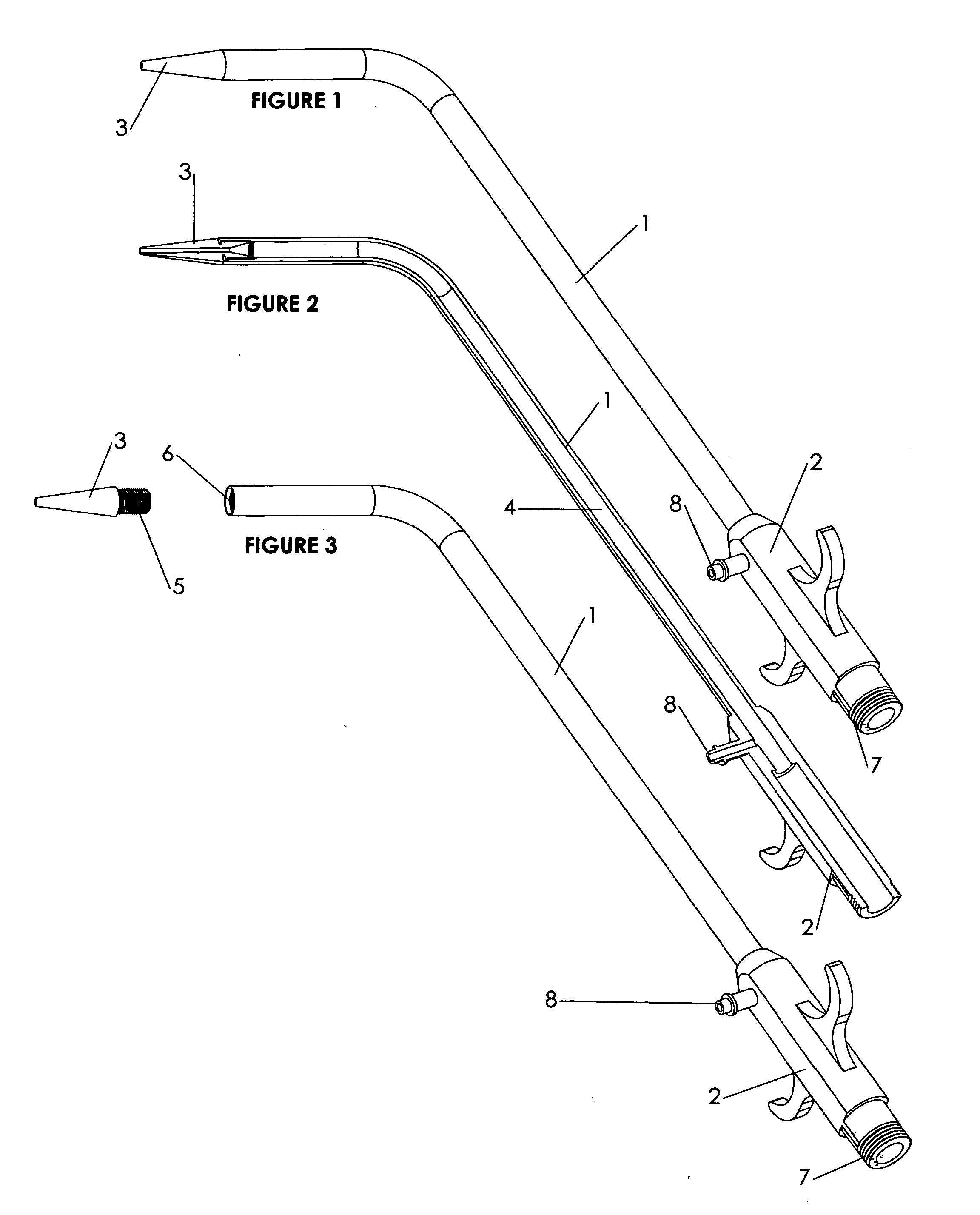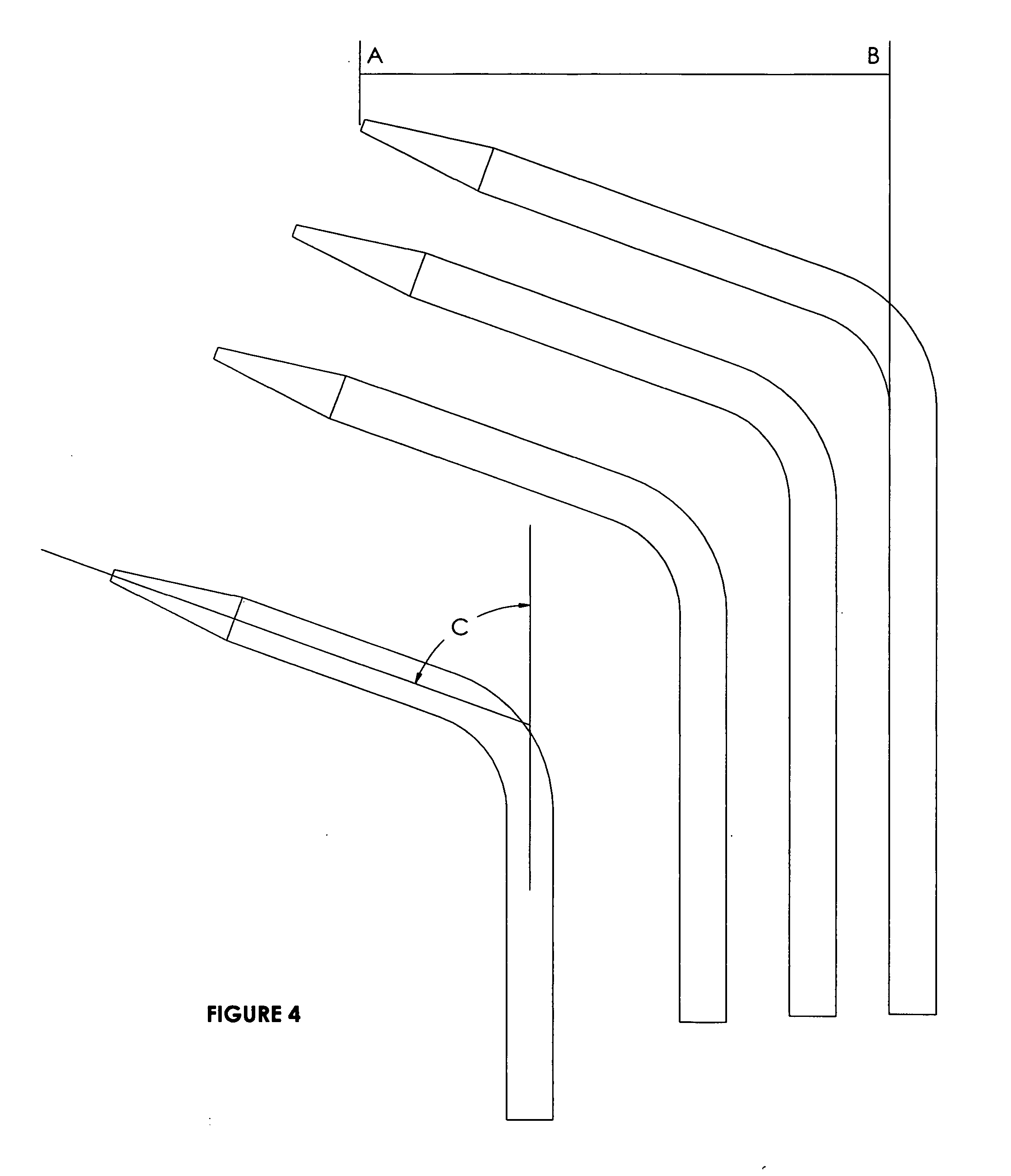Cystotomy catheter capture device and methods of using same
a technology of capturing device and catheter, which is applied in the field of medical devices, can solve the problems of inability to void satisfactorily, complicating postoperative care, and many women, however, are either unable to learn or do not want to place a catheter blindly
- Summary
- Abstract
- Description
- Claims
- Application Information
AI Technical Summary
Benefits of technology
Problems solved by technology
Method used
Image
Examples
Embodiment Construction
[0135]FIG. 1 is a perspective view of the urethral sound of the present invention. This figure shows the sound 1, the handle 2, and the tip 3. The sound is hollow, and there are holes ar either end of the sound for the insertion of a wire.
[0136]FIG. 2 is a section view of the urethral sound of the present invention. This figure shows the sound 1, the handle 2, the tip 3, and the hollow channel 4, which extends from one end of the sound to the other.
[0137]FIG. 3 is a perspective view of the urethral sound of the present invention with the tip removed. This figure shows the sound 1, the handle 2, and the tip 3. It also shows the threaded end 5 of the tip, which is inserted into the threaded distal end 6 of the sound. The proximal end of the sound 7 is also threaded for the addition of a Tuohy-Borst adapter or an endoscopic cap.
[0138]FIG. 4 is a partial schematic view of four different embodiments of the urethral sound of the present invention, illustrating different “throws” availa...
PUM
 Login to View More
Login to View More Abstract
Description
Claims
Application Information
 Login to View More
Login to View More - R&D
- Intellectual Property
- Life Sciences
- Materials
- Tech Scout
- Unparalleled Data Quality
- Higher Quality Content
- 60% Fewer Hallucinations
Browse by: Latest US Patents, China's latest patents, Technical Efficacy Thesaurus, Application Domain, Technology Topic, Popular Technical Reports.
© 2025 PatSnap. All rights reserved.Legal|Privacy policy|Modern Slavery Act Transparency Statement|Sitemap|About US| Contact US: help@patsnap.com



